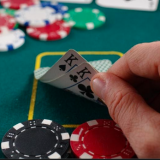Three Different Ways of Breathing
Breathing is very important when it comes to all living organisms. People breath every minute of the day, even if they are asleep. Here we will talk about different ways of breathing in both animals and humans. We shall look at these ways to breath just for general knowledge’s sake. After you finish reading make sure you play real online casino games as this will provide more entertainment.

Three different ways of breathing in living organisms
Human Lungs
Lungs are part of your body’s respiratory system. Lungs process the gas exchange for respiration, that is the primary function of lungs.
Humans use the diaphragm, the intercostal muscles, the abdominal muscles and in some instances neck muscles.
The diaphragm however does most of the work.
Bird Lungs
Birds have a very different respiratory systems as compared to mammals. Birds do have lungs but they do not have a diaphragm. They use air sacks, pressure changes in the air sacks determines the way birds breathe. The air sacks help to direct airflow through lungs in one direction, they are not directly connected to the gas exchange.
Pressure is created, this leads air to enter the respiratory system. Birds have thin walls when it comes to tubular structures, these are called Para-bronchi. Additionally, these Para-bronchi are located in throughout the lungs between the secondary bronchi. Air moves from one bronchi to another in one direction.
More oxygen is transferred in birds in just one breath, the air sacks make the bird’s respiratory system unique.
Grass Hoppers Trachea for Breathing
Grass hoppers are very different because they do not have lungs, imagine that. They breathe through the tracheae, which is a very multifaceted process. Air is taken from the spiracles first and then it goes to the tracheal system. Grass Hoppers have two more pairs of thoracic region.
Oxygen is transferred into their cells directly before it is released into the atmosphere. The brains of the Grass Hopper controls how the spiracles take in air. while trachea cleans the air in humans, the cleaning of air is independent and the circulatory system does not have anything to do with it.





















